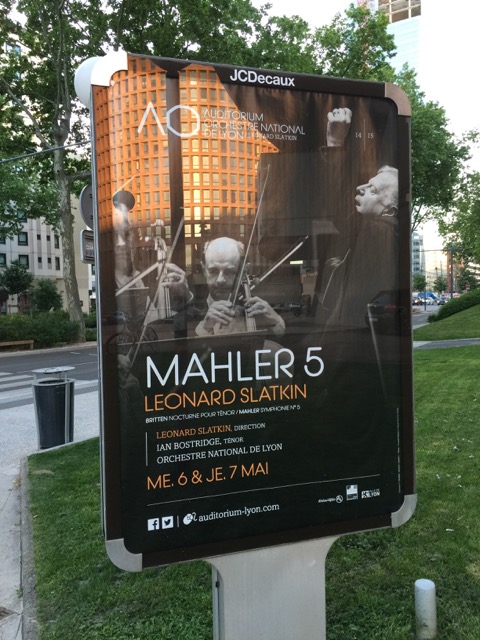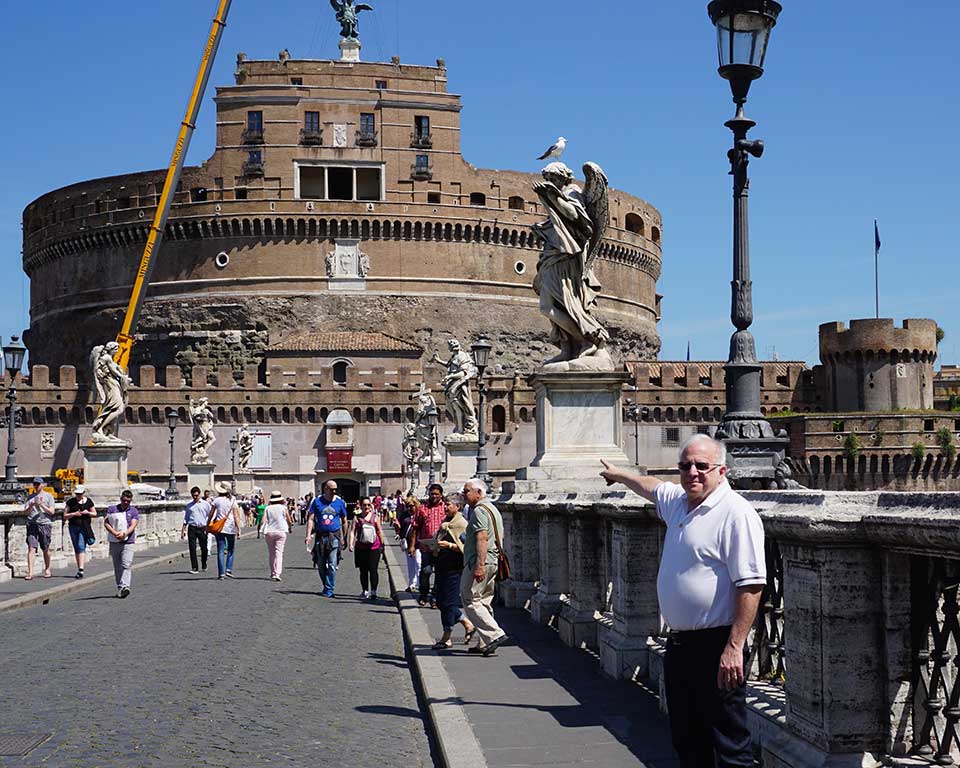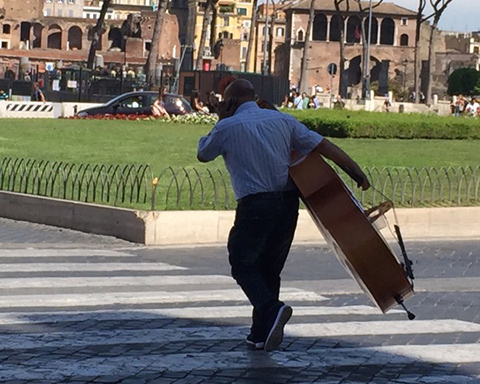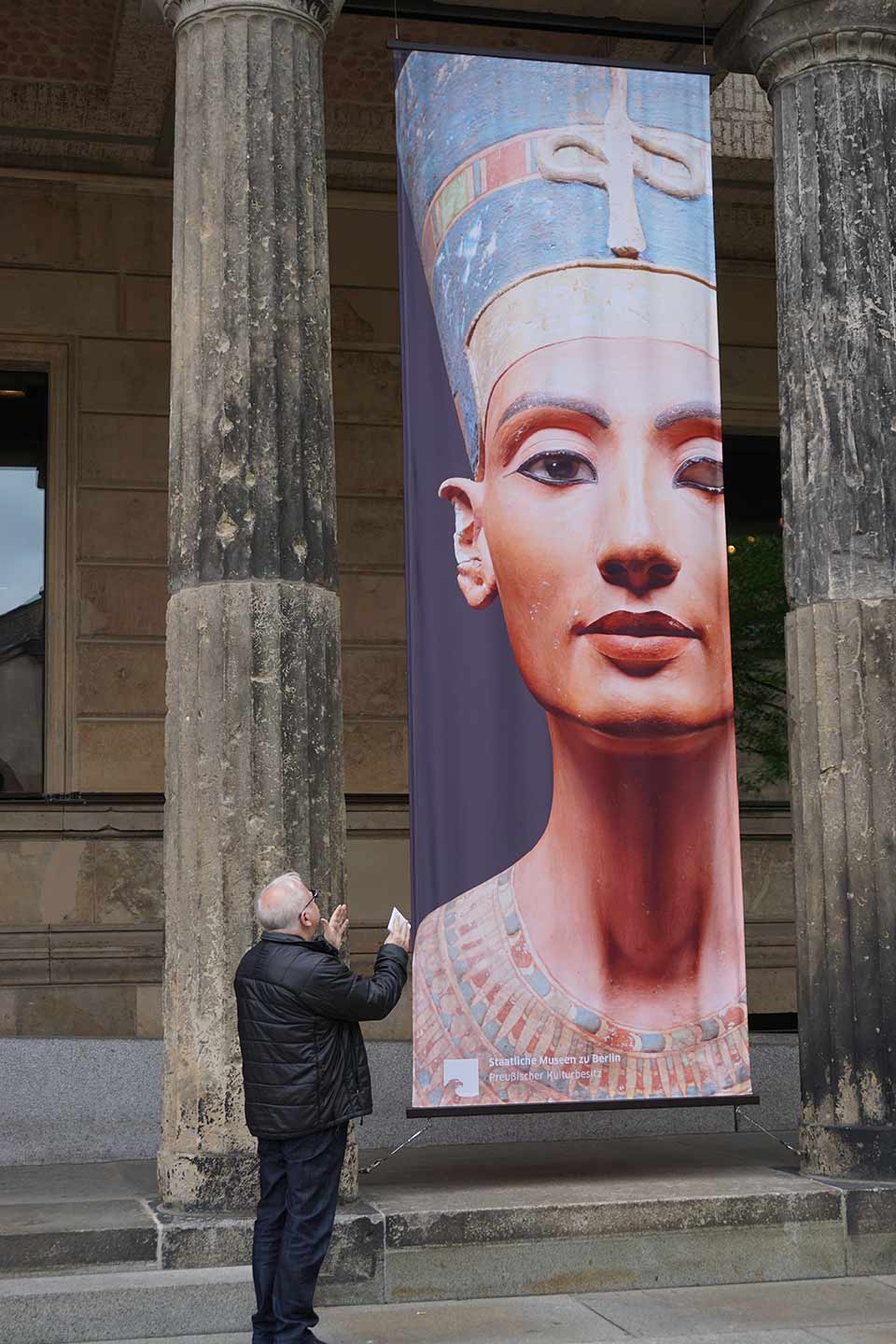It is not out of the question to describe this past month as gigantic. Over the course of four weeks, all the major works were at least an hour long. With two Mahler symphonies, Asrael by Suk and a concert performance of Tosca, I was ready for a bit of a break.
Things started off calmly enough. On what appeared to be his first visit with the ONL, Josh Bell performed and triumphed as usual. We have been working together since he was sixteen years old, so a lot of repertoire has passed between us. This time it was something new, Bruch’s Scottish Fantasie, a work which does not come up very often these days.
This piece suits him to a T, playing to virtually each strength he possesses. Most of us grew up with one of the two renditions by Heifetz but Josh stood right up there with the Russian master. As an encore, we played the Meditation from Thais. No announcement was made, as virtually everyone in the audience knows this piece. There were a few tears shed.
The two weeks in Lyon coincided with a couple of holidays, May Day, as well as the end of World War II. Because each fell on a Friday, we wound up performing on consecutive Wednesday and Thursday evenings. There was concern that we would lose a great number of audience members, but in fact, they showed up for both concerts in full force.
Preceding the Bruch, I opted for the obvious and played the Mendelssohn Hebrides Overture. Prior to the intermission it was all about Suites. One from Faure’s Pelleas et Mellisande and the other from Ravel’s Tombeau de Couperin. The ONL knows this music inside and out so all of us found ourselves on very common ground.
The following week, we paired up works by Britten and Mahler. The Nocturne is perhaps the least performed of the three song cycles for tenor and various forces that the composer wrote for Peter Pears. But in some ways, it is my favorite. With seven obbligato instruments, one for each of the poems, Britten’s vision of night is indeed dark. What a privilege for us to have Ian Bostridge as soloist. We had never worked together before, but I loved every moment of his interpretation.
Putting this work together with the Mahler Fifth made a lot of sense. Britten dedicated the Nocturne to Mahler’s wife, Alma. And the famous Adagietto is now thought to be a love letter from the composer to his partner. The funereal tone set at the onset of the symphony coincides well with the overall demeanor of the Britten, although the former ends triumphantly.
We are now halfway through the Mahler symphonic canon in Lyon. The plan is to continue right through a completed version of the Tenth, five years from now. The orchestra has become quite conversant with the composer’s language and navigated the work with sensitivity and virtuosity. Tip of the hat to Guillaume Têtu for some amazing horn playing in the third movement.
Prior to each performance, Gil Kaplan presented a remarkable lecture, complete with audio and video, describing the life and music of Mahler. Those who believed that Gil was only into the Second Symphony might be surprised to learn that he teaches a class in NY where each symphony is discussed at length, one per session. His presentation in Lyon was delivered in English with French subtitles projected on the screen. A good-sized number of people attended and loved it.
Other guests populated Lyon during our two weeks there, so Cindy and I turned into tour guides in our spare time. I love sharing the sights and sounds of our other home, especially to those who are coming for the first time.
We had a few days to spare before heading off to Berlin, so we decided to go to Rome.
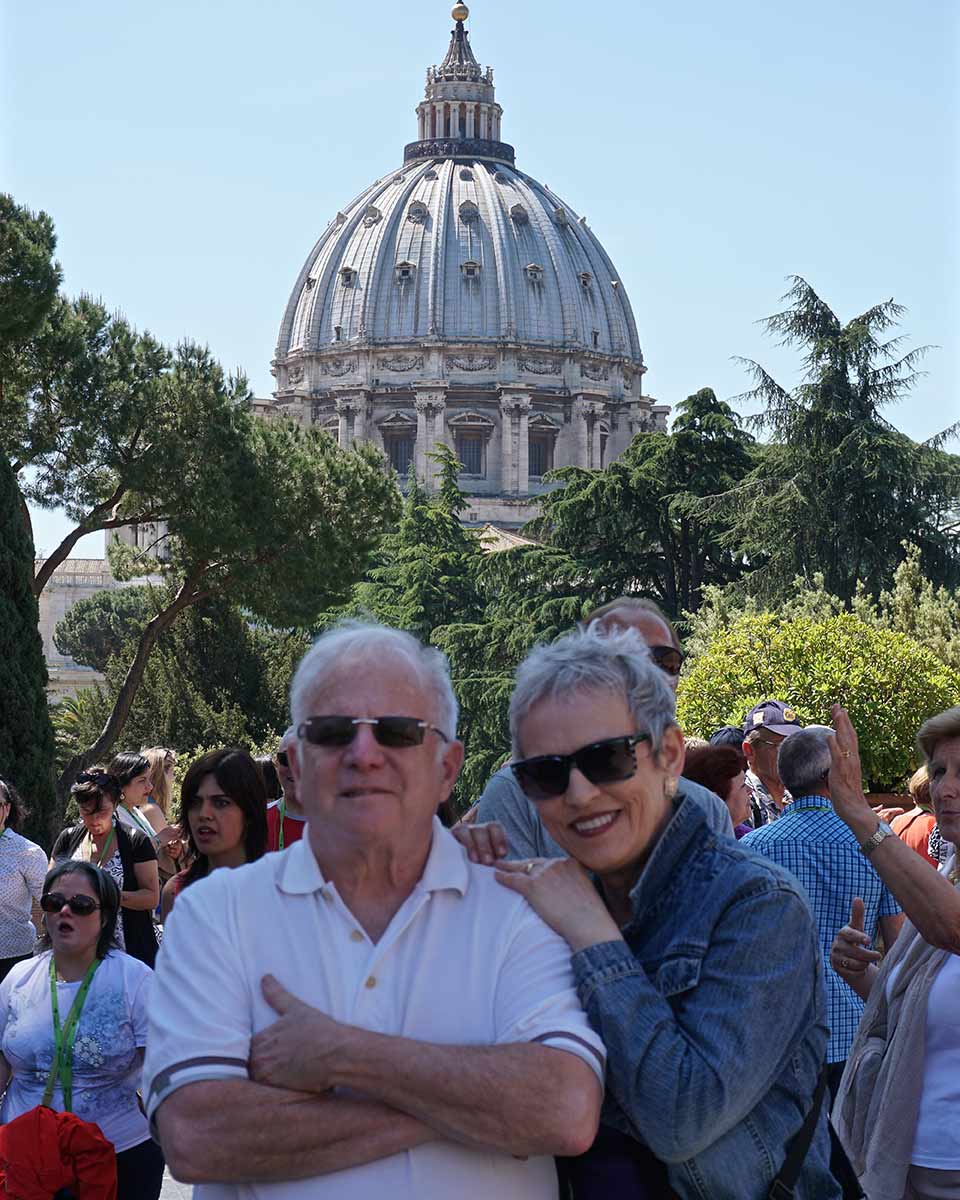
I have conducted there a couple times but it was Cindy’s first visit. As usual, most of the places we went to were also firsts for me, as I do not have much time to spare when working. This vital and alive city is really remarkable and I was grateful to Anthony Pappano for recommending some outstanding restaurants.
At one of them, we ran into Myung Wha Chung, who had just completed a concert that night. With him was the artistic administrator of the Santa Cecelia Academy. He invited me for a tour of the new facility the next day. This is truly an amazing venue, with museums, three halls, restaurants and stunning views. I hope to come back and perform there sometime in the near future.
There were some amusing moments we encountered during the sightseeing portion of the trip. Among them were all manner of street musicians and instruments.
***
The final leg of this European jaunt took us to Berlin, for a concert with one of the other DSO’s. This was the Deutsches Symphonie-Orchester, formerly the RSO, RIAS or any one of a number of names. It was one of the first German orchestras to have me as a guest starting in 1978, and it is always a pleasure to return to them.
There were only two works on the program, but each was substantial and made a wonderfully satisfying concert. A quite-pregnant Hilary Hahn was stunning in the Beethoven Concerto. We have been working together since she was 14 years old. Her growth as an artist and person has been extraordinary. This account of the piece was a wonder from start to finish.
Joseph Suk’s Asrael Symphony is truly a work that needs to be heard more often. Like many composers whose life straddled the 19th and 20th centuries, one hears the conflict over which musical ethic best suits the feelings of the writer. Clearly this piece, completed in 1906, looks back, but in this case for very direct reasons. Suk’s mentor, Dvorak had died a few years earlier and during the course of composition, the composer also lost his wife who happened to be one of Dvorak’s daughters. So a double memorial became necessary.
At about an hour, this is a work that could easily fall into Mahler territory, but the size of the orchestra Suk uses is more in the dimension of Brahms’ world. However the sound that emanates from the ensemble is just as varied as that of Gustav. The DSO threw themselves into this piece with a nuanced and well-balanced performance, one that captured the mood I hoped to create. By the end, when a muted brass section intones the main tune in C Major, it was clear that all of us were moved by the sheer emotion contained in this epic piece. After a prolonged silence, the audience responded with a most gratifying ovation.
It is likely that a few of you have heard this piece, but probably most of you have not. It is worth your time not only to listen to this piece but also read a bit about its history so that the usually abstract world of a symphony becomes more identified with its story than is usual.
***
Travel Advisory
If you are coming to the States via Amsterdam, either directly or via transfer, allow at least an hour more than the usual time for check in. It does not matter which class of service you are flying. The temporary security checks are long and arduous, as the airport is being renovated. You will encounter at least three security checks.
Returning to Detroit, we were in the process of wrapping up the subscription season. Two big, demanding works were on tap and a program change to boot.
Midori, with whom I have been making music from the time she was 16, was scheduled to perform the magnificent Walton Concerto. This is a piece that was popular back in the middle of the 20th century, but for some inexplicable reason has pretty much disappeared from the repertoire. The violinist had been ordered by her doctors not to travel, and so we had to make a quick change.
Paul Huang, who had played for me last year at the Juilliard School, was available. The Walton was in his repertoire, but with a new piece to open the program, there was concern that this, plus replacing a proven star, might frighten away some of our audience. Sibelius took its place, and Paul won over both audience and orchestra. He returns next season, and after that, we will bring him back for the Walton.
In a way, I was also a replacement, as the First Symphony by Gustav Mahler was to have been conducted by Rafael Frühbeck de Burgos. His passing meant that the work would fall to a guest conductor, but I felt that I wanted to pay tribute to the maestro by leading it myself. The DSO and I had done the work a few years ago, so many were familiar with my approach. But a lot of repertoire has passed under the bridge, so we started from scratch.
What made this week very interesting is that we decided to broadcast the first part of the second rehearsal. Union rules prevented us from showing more than 15 minutes, but since it was not the first meeting of the week, I was able to really show how a rehearsal works. Hopefully in the future audiences can see an entire practice session, as I feel this would be instructive for conductors, musicians and anyone wanting to know exactly how we put a program together.
The performances were wonderful, and it was a fine opportunity to show off our new principal bassist, Kevin Brown. With exemplary work from all the brass as well as a warm and rich sound emanating from the strings, it was clear that we had moved forward from our previous encounter with this symphony.
Opening the program was a short piece by our composer in residence, Gabriela Lena Frank. Concertino Cusqueño is a work derived from her South American roots. Both contemplative and lively, the work was a big hit with the audiences. The solo string quartet of principals delivered the virtuosity required over the course of the ten minutes. Gabriela will write a Concerto for Orchestra as her piece for next season.
It was on to the finale for the year, the biggest project we had ever tackled here. Tosca is of course a staple of every opera company, but it is a work the DSO had not played since sometime in the 1930’s. In essence, we were starting from scratch, and that gave us the chance to really examine every aspect of the score. With no preconceptions, we were able to shed some of the “traditions” and deliver a powerful presentation of the score.
It was not only the musicians who were seeing this work for the first time. We opted for a version that would require a lot from the staff. Cueing entrances for all the soloists and chorus, dealing with logistics of offstage effects and just getting everyone in the right place at the right time were among the challenges they faced. I guess the word would be semi-staged, but there were no costumes, just a bit of coming and going so the audience would see how the characters interacted.
We placed the orchestra pretty much as far to the rear of the stage as possible to create enough room to accommodate the singers. My podium was halfway between the orchestra and the edge of the stage so that I could keep in communication with the soloists. For the choral portions, the director of the Choral Union, Jerry Blackstone, stationed himself in the audience, where he took the cues from me. At one point, there were more than 200 people on the stage at one time.
What a fantastic group of vocalists we had for this! Patricia Racette delivered the title role with passion, helping the audience forget that they were in a concert hall. James Valenti showed all the skills he exhibited five years ago in La Traviata at the Met. Raymond Aceto, replacing an indisposed Eric Owens, brought his menace to Scarpia. We dealt with the casualties of war in unique ways, using a chair and the floor to simulate the principal characters’ demises. I got to resurrect Cavaradossi by pointing my baton at him during the applause. If Harry Potter could do it, why couldn’t I?
It is not an understatement to say that the ovations at the end were the most vociferous of any audience we have had during my seven-year tenure with the DSO. Although the week was easily the most demanding for everyone concerned, there was the gratification of having pulled off this project in the best way possible. It augurs well for not only next season’s Salome, but also future operatic presentations.
There was still another week of concerts with the orchestra, but the subscription series ended on the highest note possible.
See you next month,
Leonard
